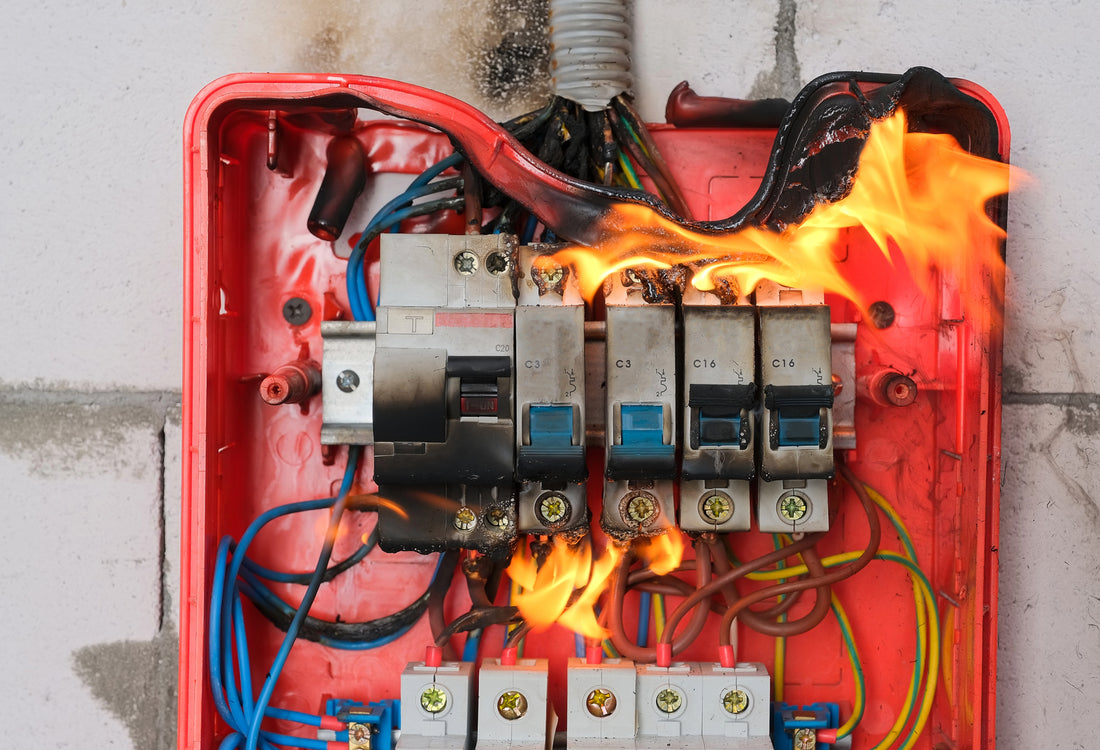
Electrical Fires: How to Recognize and Prevent. Complete Guide
Electrical fires are among the most dangerous and unpredictable hazards in any home. They often begin in hidden places—like inside walls or appliances—and can go unnoticed until they’ve caused serious damage. One of the earliest and most telling indicators is the smell. But what does an electrical fire smell like, and how can you prevent this potential disaster?
In this guide, we’ll explore the warning signs of electrical fires, the distinct odours associated with them, and the crucial steps you can take to protect your home and loved ones.
What Causes Electrical Fires?
Before diving into the warning signs, it’s important to understand what typically causes electrical fires. Common culprits include:
- Faulty Wiring: Worn, frayed, or damaged wiring is one of the leading causes of electrical fires. Homes with outdated electrical systems are especially vulnerable.
- Overloaded Circuits: Plugging too many devices into a single outlet or power strip can create excessive heat and ignite a fire.
- Appliance Malfunctions: Old, damaged, or poorly manufactured appliances can overheat or spark, leading to a fire.
- Improper Installation: DIY electrical work or poorly installed systems can increase the risk of short circuits and overheating.
What Does an Electrical Fire Smell Like?
A distinctive odour is often the first warning sign of an electrical fire. These smells vary depending on the materials burning but are always a cause for immediate concern.
- Burning Plastic. Many electrical components, such as wiring and outlets, are encased in plastic insulation. When these overheat, they release a strong, acrid burning plastic smell.
- Ozone or Metallic Smell. Short circuits or sparking wires can produce an ozone-like or metallic odour. This smell may be faint at first but becomes more pronounced as the fire risk increases.
- Burning Rubber. Electrical cords insulated with rubber can emit a pungent burning rubber smell when exposed to high heat or sparks.
- Overheated Appliances. Appliances that are malfunctioning or overheating often produce a mix of hot metal, burning dust, or melting plastic smells.
If you detect any of these odours, it’s important to act quickly before the situation escalates.

Other Warning Signs of an Electrical Fire
While odours are a key indicator, they’re not the only warning signs. Be alert for these additional symptoms:
- Unusual Noises: Popping, sizzling, or buzzing sounds from outlets, switches, or walls can signal electrical arcing.
- Discoloured or Warm Outlets: Scorch marks, melted plastic, or heat radiating from outlets and switches are red flags.
- Flickering or Dimming Lights: When circuits are overloaded or wires are damaged, your lights may behave erratically.
- Tripped Circuit Breakers: Frequent tripping of your circuit breaker is often a sign of underlying electrical problems.
Immediate Actions to Take
If you suspect an electrical fire, every second counts. Follow these steps to minimise the damage and protect your family:
- Cut the Power. Locate your home’s circuit breaker and turn off the power to the affected area—or shut off the main breaker if you’re unsure. This prevents the fire from spreading further.
- Do Not Use Water. Water conducts electricity and can make the fire more dangerous. Avoid using water under any circumstances.
- Use the Right Fire Extinguisher. A Class C fire extinguisher is specifically designed to combat electrical fires. Ensure you have one in an accessible location.
- Evacuate Immediately. If the fire is out of control, evacuate your home and call emergency services. Never attempt to tackle a large fire on your own.
Long-Term Prevention Tips
The best way to deal with electrical fires is to prevent them from happening in the first place. Regular maintenance and good practices can significantly reduce your risk.
Inspection and Maintenance
- Upgrade Old Wiring: Older homes may have wiring that isn’t equipped to handle modern electrical loads. Consider a professional inspection.
- Check Outlets and Switches: Replace any outlets or switches that show signs of wear, such as cracks, scorch marks, or looseness.
- Service Your Appliances: Ensure all appliances are in good working condition, and repair or replace any that show signs of damage.
Safe Usage Practices
- Avoid Overloading Circuits: Use outlets and power strips responsibly, plugging in only as many devices as the circuit can handle.
- Unplug Unused Devices: Appliances and electronics that remain plugged in can overheat, even if they’re turned off.
-
Invest in Surge Protectors: Surge protectors can prevent dangerous power surges from damaging your electrical system.
Install Safety Equipment
- Smoke Alarms: Ensure your home has smoke alarms installed in key areas and test them monthly.
- Arc-Fault Circuit Interrupters (AFCIs): These devices detect dangerous electrical arcing and shut off power to prevent fires.

Educating Your Family
Prevention isn’t just about equipment—it’s also about awareness. Teach your family members to recognise the signs of electrical fires and how to respond. Conduct regular safety drills so everyone knows what to do in an emergency.
Final Thoughts
Electrical fires are a serious threat, but with vigilance and preparation, you can greatly reduce the risk. Pay attention to unusual smells, inspect your electrical systems regularly, and invest in safety tools like smoke alarms and fire extinguishers.
Remember, early action saves lives. If you ever suspect an electrical fire, trust your instincts and act quickly. Your safety is worth it.




